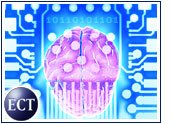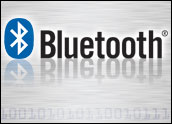
Real-time data mining — powered by neural-network technology — has begun to remake the way large corporations manage customer accounts. The technology has been helping companies gain deep insight into customer purchasing patterns.
While the technology is just now beginning to gain appeal, research to develop neural networks was started years ago by the Pentagon’s Defense Advanced Research Projects Agency (DARPA) and a firm founded by technology visionary Robert Hecht-Nielsen, whose company, HNC Software, was acquired last fall by Fair Isaac, a developer of statistics-based consumer and corporate credit score software.
“Traditional fraud detection operates with a delay of months or years,” Tammy Delatorre, a spokesperson for Fair Isaac, told TechNewsWorld. “While useful, this approach does little to prevent fraudsters from committing costly fraud schemes and then disappearing with the money.”
To solve this fraud problem and to help predict customer trends, large corporations have begun to deploy neural-network technology — so-called because it is patterned after the human brain’s own synapses.
Predictive Neural Networks
The brain learns from experience, and that is the general goal of neural-network technology, which is generally thought to be the next major advancement in the computing industry.
Even simple animal brains are capable of functions that are currently impossible for computers. Computers do certain things well, like keeping ledgers or performing complex math. But computers have trouble recognizing even simple patterns, much less generalizing those patterns of the past into actions for the future.
However, advances in biological research have begun to enable an understanding of how natural-thinking mechanisms store information as patterns. Some of these patterns are very complicated — even the seemingly simple brain patterns that give us the ability to recognize individual faces from many different angles.
This process of storing information as patterns, using those patterns and then solving problems encompasses the entire neural-networking focus in computing. The field does not use traditional programming, but rather focuses on the creation of massively parallel networks and the training of those networks to solve specific problems.
This field also uses words that are very different from traditional computing terminology — words like “behave,” “react,” “self-organize,” “learn,” “generalize” and “forget.”
From Lab to App
The neural-networking technology at work today so far has taken the form of fraud detection and customer-behavior prediction. The fraud-detection software works by identifying patterns of suspicious behavior and providing a score of a transaction based on that claim’s degree of risk.
“The score allows claims professionals to determine which claims must be taken out of the payment stream for further investigation, and allows the rest of the claims to be fast-tracked for payment,” said Fair Isaac’s Delatorre. “The system also provides reason codes to help investigators determine the most appropriate action on each high-risk claim.”
Many banking clients try to keep their use of such fraud-fighting technologies quiet. But this spring, Fair Isaac announced that London-based HSBC Holdings PLC, one of the largest banking and financial services organizations in the world, with 9,500 offices in 80 countries and territories, is using Fair Isaac’s predictive software to fight fraud.
Other technology developers are taking a similar approach, saying their technologies provide “predictive analytics” for use in enterprise environments.
By Any Other Name
To be sure, neural-networking technology falls under the umbrella of artificial intelligence.
“AI is known by different names — data mining, statistics, machine learning — and it has fallen in and out of fashion over the last few decades, suffering from overhype and an inability to deliver,” Faye Merrideth, a spokesperson for developer SAS, told TechNewsWorld.
In recent years, companies have taken batches of data and extracted information from that data. This process generally has been conducted in the back office. Now, however, the technologies are moving toward the front office — to sales representatives and others who need the information for immediate decision-making to act upon business events at the front lines of an organization.
Using relational databases and Predictive Model Markup Language (PMML) — two technologies at the heart of the neural-network strategy — developers are creating data-mining technology and providing scores for all kinds of information, such as when to offer a customer a new product and which customers are most likely to respond to an offer.
The Next Generation
“A new generation of data mining is upon us,” Stephen Brobst, CTO of Teradata, told TechNewsWorld. “This means that data-mining algorithms must be executed by engines capable of real-time scoring rather than by traditional batch-file processing techniques.”
To predict which customers are likely to accept an offer, the algorithms are created on the basis of which customers have accepted similar offers in the past and which customers have rejected offers.
“After selecting an appropriate discovery algorithm, the data-mining tool is applied to the training set to uncover the patterns that can be used for predicting the targeted behavior,” Brobst explained.
Mole Hills to Mountains
In the most advanced neural-network and predictive-analysis systems currently deployed, only a few dozen transactions by any given customer are needed to determine likely future behavior. Data used for analysis can come from all kinds of transactions, including call-center logs, warranty logs, e-mail, faxes, Web-site contacts and even surveys, Sue MacDonald, a spokesperson for developer Intelliseek, told TechNewsWorld.
“Not only do they derive factual information from all that data, they’re using language-processing algorithms and structures to detect other facets, such as underlying sentiments,” said MacDonald, noting that the software can help determine if customers are pleased, angry or indifferent. “One of the goals is for companies to better segment and target their customers.”
Intelliseek operates an Advanced Research Center in Pittsburgh, site of the former WizBang Labs, which Intelliseek acquired. Other players in this emerging technology field — including Knowledge Extraction Engines and CombineNet — use advances in statistics and game theory to optimize business processes for companies.
DARPA is still active in this area, too, recently investing US$29 million in a research project called Perceptive Assistant that Learns (PAL). The idea is to learn the habits and thinking styles of military commanders in the field so they can automate some of their routine functions and concentrate on winning a particular conflict.
Client-Server Key
The growth of client-server computing during the 1990s gave predictive analytics the boost it needed in the corporate marketplace. Developers created huge relational databases using client-server technologies — as well as advances in networking protocols — to bring neural-network applications to life.
These applications today are not HAL from Stanley Kubrick’s movie “2001: A Space Odyssey,” but thinking machines are starting to offer companies significant strategic and tactical advantages in the marketplace. Building on these developments, and further refining neural-net systems so they can incorporate all kinds of data types — such as images — is what many companies working in this area hope to accomplish.
“This is the most important scientific challenge of our time,” said Hecht-Nielsen. “And finding the answers will be the challenge of the millennium.”




















































